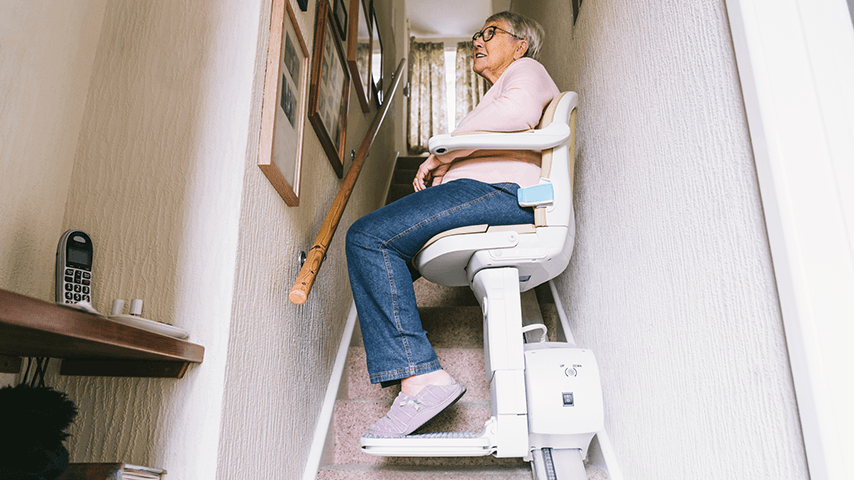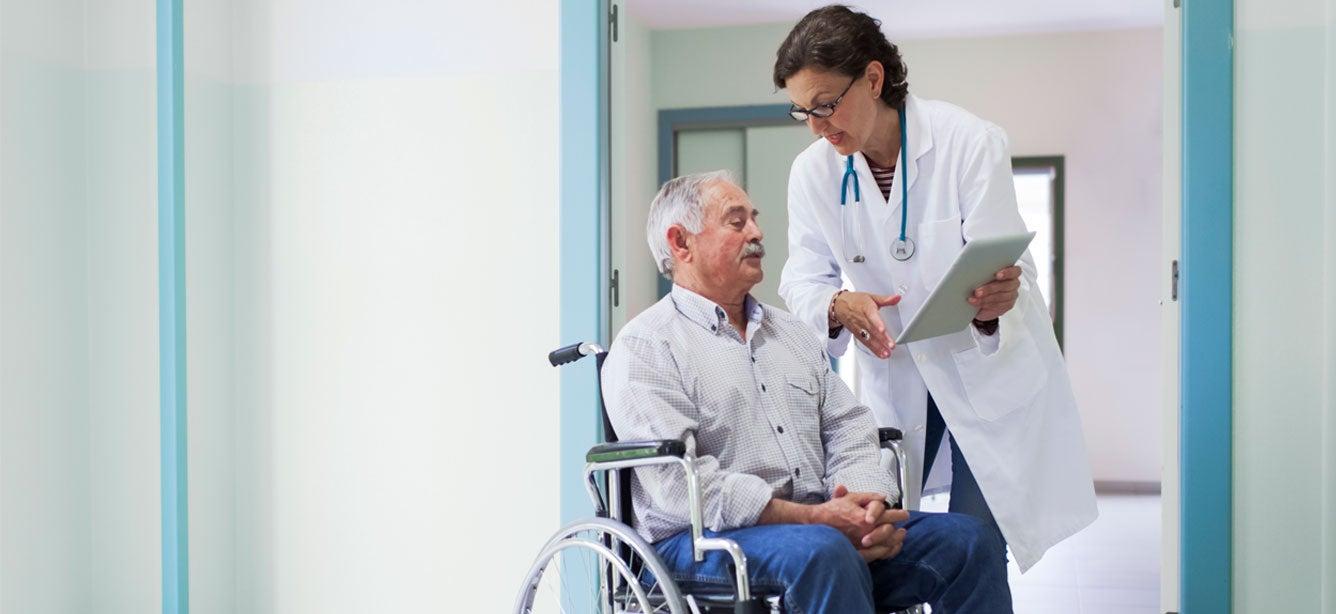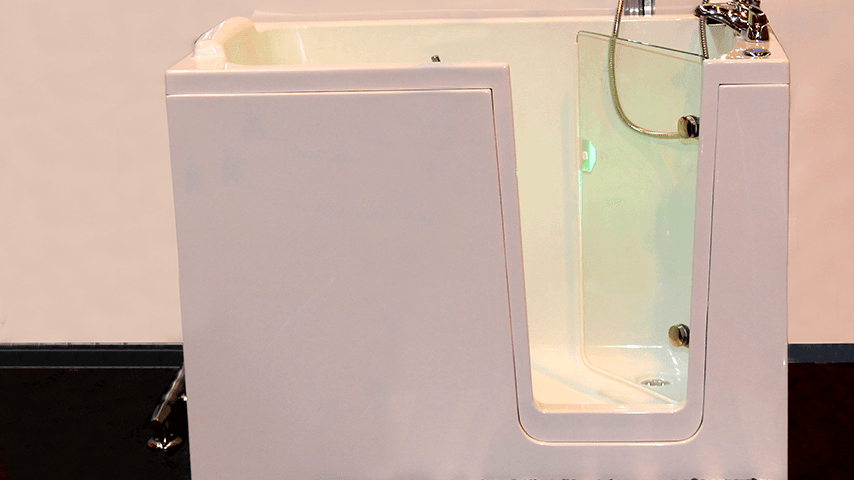Stair Lift Costs: A Complete Guide
15 min read

Most of us want nothing more than to continue living in our homes as we age. In fact, according to a recent poll based of out the University of Michigan’s Institute for Healthcare Policy & Innovation, a resounding 84% of American adults age 65 and over say they plan to stay where they are for the rest of their lives.1
Still, nearly as many of us have not planned ahead to make our homes more “age-friendly.” Up to 80% of people polled hadn’t yet modified their living space to accommodate future physical challenges: changes to mobility, balance, and strength that often happen as we grow older.
“Being able to safely move around our homes is key to maintaining independence longer,” explained Dorothea Vafiadis, Senior Director of NCOA’s Center for Healthy Aging. “That’s why there’s no better time like the present to look around and think about where and how you can make changes to ensure a safer and easier tomorrow.”
More specifically, Vafiadis said, it’s important to consider changes that help prevent falls—which are the leading cause of injury among those of us age 65 and over.2 In addition to removing area rugs and other tripping hazards, for example, you may want to consider adding bathroom grab-bars and better lighting in hallways and on the stairs. Be sure to check out this home modification checklist for important safety recommendations.
Speaking of stairs: you may already suspect that they pose a particular risk. They do.
“Anyone can trip going up or down the stairs, I’ve stumbled and fallen myself, ” Vafiadis said. “But as we get older the risk increases. Our vision may not pick up stair edges as clearly; we may take medications that affect our balance; we may not have the leg strength or endurance that we once used to.”
Further, she added, “if we do stumble and fall on the stairs, the consequences can be serious: a broken hip, a head injury, or other trauma that reduces our quality of life and may even take away our ability to remain living at home.”
A stair chair lift can effectively address this risk. Does installing one make sense for you or someone you help care for? It might: especially if you can’t easily relocate an upstairs bedroom or bathroom to allow for one-level living—or if the only way into the home requires climbing a flight or more.
But how much do home stair lifts cost? Are they affordable?
As with most things, it depends: on your budget, your living space, the features you choose, and whether you buy the equipment or rent it. While it’s difficult to define the average cost of a stair lift, you can expect to pay between $2,500–$8,000.
In this article, we break down the bottom-line costs so you can decide if a stair chair lift is right for you. We've also tested many stair lifts ourselves to and rated these the best stair lifts to add to your home.
How much does a stair lift cost?
What you will pay for a home stair lift depends on the manufacturer, features, type of staircase, and other factors. Generally speaking, you can plan your budget according to the following table:
Cost comparison by stair lift type
|
|
STRAIGHT |
CURVED |
OUTDOOR |
|
EQUIPMENT COST |
$2,000–$3,500 |
$7,000–$10,000 |
$3,000–$6,000 |
|
INSTALLATION COST |
$500–$1,500 |
$1,000–$2,000 |
$1,000–$2,000 |
|
TOTAL ESTIMATE |
$2,500–$5,000 |
$8,000–$12,000 |
$4,000–$8,000 |
What factors affect the cost of a stair lift?
There are several things that affect the price tag. These include:
Stair lift equipment costs
$2,000–$6,000
“Off-the-shelf” models include standard basic features that are essential for safe operation: a stationary (non-moveable seat); a seatbelt; simple hand controls; and a track. You also have the opportunity to customize your stair lift. These additions will increase the cost and might include things like:
- Features and accessories—Choose options like a power swivel seat; folding footrest; custom upholstery; remote control; automatic retracting rails; and more.
- Weight capacity—Most standard stair lifts accommodate 300 pounds, including the rider’s weight and anything they are carrying. Upgraded heavy-duty models can hold up to 600 pounds.
- Brand—As with all consumer items, there are base and luxury stair lift manufacturers—with many choices in between. Sometimes, you’re paying for the name.
Stair lift installation costs
$500–$2,000
When it comes to home stair lifts, it may be tempting to take a do-it-yourself approach—especially if you or someone you know is handy. This may make sense if your staircase is inside the house, doesn’t include turns, and has power outlets nearby. Otherwise, consider the potential unintended costs of a stair lift that professional installers already know how to anticipate and avoid. This includes needing to buy specialized tools; having to call in an electrician; and how to deal with hidden structural issues—among other things.
“The purpose of a stair lift is to prevent injuries and make dailylife at home easier,” Vafiadis said. “Sometimes that means making a bigger up-front investment for peace of mind and safety down the road.”
Plus, she pointed out, your time is money, too. What might take you several days to install may only take an expert a few hours.
Here are the factors that contribute to installation costs:
- Staircase type: Stairs that run straight up—and for only one floor—will cost the least. Staircases with landings and turns require custom tracks, extra labor, and can cost significantly more.
- Structural needs: Are your walls strong enough to hold the stair lift and rider(s)? If not, expect to pay more for additional bracing.
- Electrical work: If they don’t already exist, you will need to add one or more outlets along your stairs in order to operate your chair lift.
- Environment: Unlike their indoor counterparts, outdoor stair lifts are built to withstand the elements. Weatherproofing features and the need for outdoor electrical outlets will add to the cost.
Stair lift maintenance and other ongoing costs
Varies
Keeping your stair lift in good working order helps protect your initial investment and your safety, too. Most manufacturers recommend annual or bi-annual servicing, which involves inspecting and addressing any issues with the rails, motor, gear box, and controllers. You likely will have the option to purchase a maintenance plan to cover parts and service; the cost for these plans depend on your specific stair lift, whether it’s new or reconditioned, and whether it’s indoors our outside, for example. Generally speaking, expect to pay $100–$300 each year for a plan.
Other ongoing costs to keep in mind include:
- Warranty: Most manufacturers offer a limited warranty; you also may opt to purchase an extended or lifetime warranty.
- Batteries: Typically, you will need to replace batteries every 1–3 years at a cost of $200–$300 each time (unless this is already covered under a warranty or service plan).
Ways to save on stair lift costs
The costs for a home stair chair lift can add up quickly—especially for those of us living on fixed incomes. Still, advised NCOA’s Vafiadis, there may be ways to lower the price tag.
“First and foremost,” she said, “take the time to think carefully about what you truly need in a stair lift, not just what sounds appealing. Some high-end features sound exciting, but are they truly worth the cost? What if something breaks? Will you be able to afford repairs? Be honest with yourself. Often the most reliable and user-friendly option is the simplest one.”
Once you know your needs, it pays to shop around. Visit or call local dealers (or ask a trusted caregiver to do this) and compare a few different manufacturers on price. Ask about installation costs and whether the dealer offers any incentives like seasonal sales or bundle promotions.
And remember to check around for other discounts, too. Membership organizations like AARP often negotiate for lower prices and “senior” discounts you can apply toward your purchase. Your local senior center can be a good resource. There may be special deals available for program participants, including word-of-mouth referrals.
Here are a few other options to help you afford a home stair lift:
Health and long-term care policies
Does insurance cover stair lifts? Maybe. Original Medicare (Medicare Part A and Medicare Part B) does not. But some other plans might, including:
- Medicare Advantage: Many Medicare Advantage (Part C) plans offer additional benefits that may include coverage for mobility equipment. But the devil is in the details. Whether or not a stair lift qualifies depends on the insurance provider and plan, and restrictions usually apply. Check your policy documents for specific eligibility guidelines; and if you’re still not sure, call your insurance provider directly to ask.
- Medicaid: Some states offer home and community-based services waivers (HCBS Waivers). These waivers can help people who are enrolled in Medicaid remain at home rather than enter a skilled nursing facility. HCBS Waiver programs may provide grants to pay for home modifications, but it depends on where you live. Reach out to your state’s Medicaid office to learn more.
- Long-term care and other private insurance policies: This one’s a little tricky. In general, long-term care insurance exists to help pay the costs of in-home or skilled nursing care not covered by Medicare or Medicaid. That said, some—but not all—policies will cover home modifications if your health care provider says they are medically necessary. If you have a long-term care policy, be sure to ask about reimbursement requirements before investing in a stair lift.
Grants and other financial assistance programs
In addition to checking your insurance policies, there are a few other options to investigate that may help pay the cost of a stair lift. These include:
- Manufacturer’s financing plans: Many companies and dealers are willing to work with you: offering low- or no-interest monthly payments for the equipment, installation, or both. Some even will wrap ongoing maintenance fees into your package. Check websites or ask a sales representative about financing options. Sometimes companies partner with third-party lenders, which is important to know about up front.
- Rental programs: Many of these same companies and dealers allow you to rent their stair lift equipment. Terms can range from several months to several years or more, depending on your needs. It’s a good idea to comparison shop; some rental agreements include free installation, maintenance, and disassembly if you no longer want or need the stair lift. You may even be able to “rent-to-buy.”
- Reconditioned equipment: Consider asking about pre-owned stair lifts. Many dealers offer certified reconditioned equipment at reduced cost, including a warranty (though coverage may be limited). If you’re willing to compromise on certain features, like giving up your choice of upholstery color, buying used can be a budget-friendly option. Availability will vary; your local dealer can go through options with you.
- VA benefits: If you’re eligible for military veterans benefits, the U.S. Department of Veterans Affairs offers several disability housing grants. These cash grants can help you buy or modify your or a family member’s home to accommodate your mobility needs. Your state Veterans Service Officer can help you understand and apply for these programs if you qualify. Find yours here.
- Federal loans and grants: The U.S. Department of Agriculture’s Section 504 Home Repair Program helps low-income homeowners repair, improve, or modify their houses to make them more accessible. In order to qualify, you must be age 62 or over, live in an eligible rural area, and meet your county’s definition of “very low income,” among other rules. Contact your state USDA loan specialist to learn more.
- State loans and grants: In partnership with the federal government, many states offer cash grants and other incentives to help residents remain safely in their homes as they age. Programs and eligibility rules depend on where you live. Visit the U.S. Department of Housing and Urban Development’s state directory to learn about homeowner assistance options in your area.
- Area agencies on aging (AAA): AAAs are nonprofit agencies designated by the state to help older adults and people with disabilities live independently in their homes. Some, though not all, AAAs provide direct grants and technical assistance; others will refer you to reputable financing and service partners who can help with home modification and repairs.3 Find your local AAA by visiting the Eldercare Locator or calling 1-800-677-1116.
- Federal and state tax deductions: Can you get a tax break for making accessibility upgrades to your home? Maybe. But there are several important caveats, including whether these upgrades are considered “medically necessary” under the IRS code. Further, these deductions may only make sense if you itemize your returns. A certified tax accountant or other financial professional can help you navigate these laws, which change often.
Finally, the University of Southern California and the National Resource Center on Home Modification teamed up to create a state-by-state directory of resources, including ways to help finance safety and accessibility upgrades.
The bottom line
A home stair lift can effectively reduce the risk for falls and help you or someone under your care safely age in place. The price tag can be hefty—stair lift costs typically range between $2,000–$10,000 plus installation and maintenance—but there are many options to help pay for one.
First, compare the financial benefits of buying a new stair lift versus reconditioned equipment, which will cost less. You might also consider renting, which offers flexible terms and a low commitment. In all instances, it’s worth asking the dealer about no- or low-interest financing options, too.
Also check into federal and state home modification loans and grants. These programs specifically intend to help people with mobility challenges improve the accessibility and safety of their living space. The U.S. Department of Veterans Affairs, U.S. Department of Agriculture, and the U.S. Department of Housing and Urban Development offer such programs. So do many individual states and some nonprofit organizations serving older adults.
FAQ
What’s the average cost of a stair lift?
This depends on your living space, the features you choose, whether your stairs are inside or outdoors, and whether you buy the equipment or rent it. On average, you can expect to pay between $2,500–$12,000 installed. Optional extended warranty and service plans will cost extra.
Can I rent a stair lift?
Yes. Most dealers offer this option. Fees can range between $175–$500 per month, with no long-term contract required. In some cases, these fees include installation, maintenance, and removal if you no longer want or need the stair lift.
Are stair lifts tax deductible?
If you can prove that your stair lift is a “medically necessary” home modification, you might be able to deduct a portion of the cost. However, IRS rules are complicated and the code often changes. A certified accountant or tax attorney can provide expert guidance that fits your particular situation.
Questions? Email us at reviewsteam@ncoa.org.
Sources
1. Jeffrey Kullgren, MD, MPH, MS. Poll shows wide variation in older adults’ preparations to age in place. Institute for Healthcare Policy & Innovation, University of Michigan. June 24, 2025. Found on the internet at https://ihpi.umich.edu/news-events/news/poll-shows-wide-variation-older-adults-preparations-age-place
2. Centers for Disease Control and Prevention. Older Adult Falls Data. Oct. 28, 2024. Found on the internet at https://www.cdc.gov/falls/data-research/index.html
3. USC Leonard Davis School of Gerontology. Building Community Capacity to Serve Older Adults: The Role of Area Agencies on Aging in Home Modifications and Repairs. Found on the internet at https://www.usaging.org/Files/DataReport-Home-mod-508.pdf



